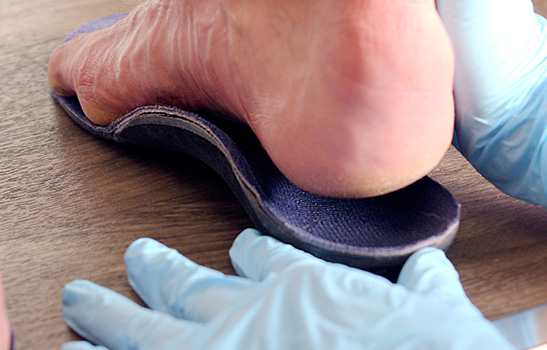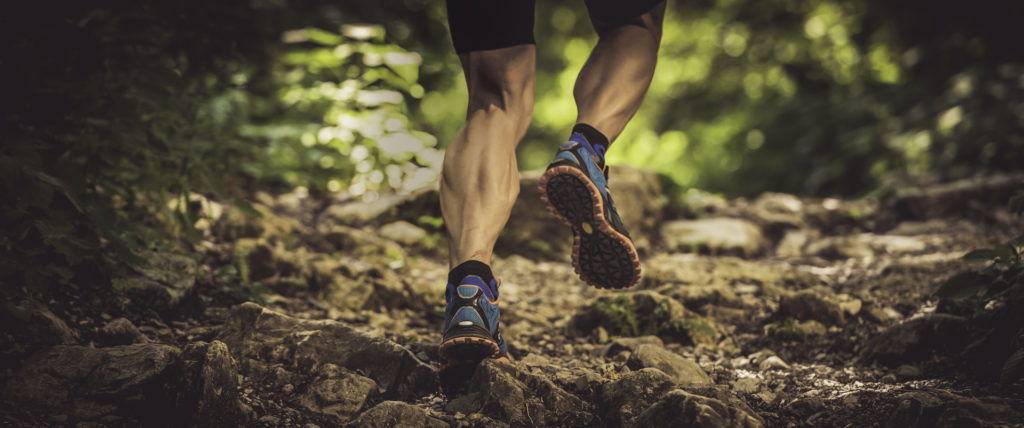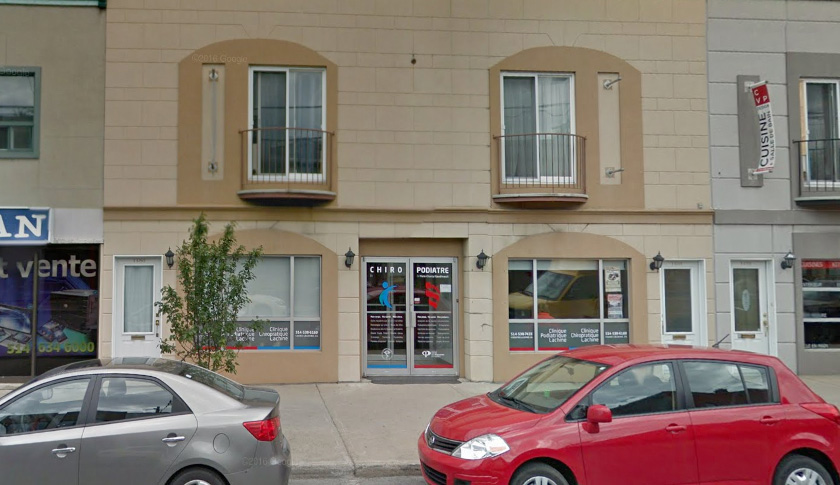Periostitis / Shin splints
“Periost-”: relating to the periosteum, a membrane that envelops bones “-itis”: Inflammation
Other name used: Medial tibial stress syndrome
Characterized by the presence of pain down the front or inside of the shin, especially during physical activity. Periostitis, or shin splints, refers to inflammation of the membrane that envelops the shinbone. The condition particularly affects athletes who frequently run.
See the causes See the long term complications See how to relieve yourself at home
Signs and symptoms of shin splints
- Pain along the inner edge of the lower tibia (shinbone)
- Pain at the front of the shinbone
- Tearing sensation
- Burning sensation on the shin during physical activity
- As fatigue sets in, feet may start to make a loud, heavy sound when hitting the ground
- The pain gets worse when running on inclined, uneven or hard surfaces and/or when accelerating
What is the cause of periostitis / shin splints
The periosteum is a fibrous vascularized membrane with nerve endings that envelopes bones and provides an attachment for muscles. When a muscle applies excessive and repeated tension on its attachment to the bone, the periosteum can become inflamed and painful. The two muscles most commonly involved in shin splints are the tibialis posterior and the tibialis anterior.
The tibialis posterior is a very important muscle that originates behind the tibia. This muscle is involved in nearly all functions of the foot. It supports and lifts the arch of the foot, slows down the motion of the foot when it hits the ground, helps absorb shock, increases the foot’s stability on the ground and plays an active role in propulsion during walking or running. When problems with posture or foot biomechanics are present, the tibialis posterior can become overworked, causing repeated stress in the area where the muscle attaches to the shinbone. As a result, pain is felt in the middle third portion of the inner edge of the leg.
The tibialis anterior originates in the front, upper side of the shinbone. This muscle plays an important role in slowing down the motion of the foot when it hits the ground, absorbing impact and raising the foot after propulsion. The attachments of the tibialis anterior can get irritated when the muscle’s function is compromised by poor biomechanics. This becomes particularly problematic when running on an incline, and among runners whose technique relies too heavily on landing on the front half of the foot or too much on the heel.
There are a range of problems that can lead to overuse and repeated stress of the tibialis posterior and tibialis anterior :
- Flat feet
- Collapsed plantar arches (hyperpronation)
- Bunions (hallux valgus) and/or dysfunction of the big toe
- Lack of flexibility in the calf muscles
- Joint hypermobility (excess of flexibility in the foot)
- Excessive curvature of the knees or shins (tibia varum)
- Leg-length discrepancy
- Flexible high arches
- And many others
The problem can also be triggered by aggravating factors, including:
- Increasing training volume or intensity too quickly (frequency, amount, incline, distance)
- Running on uneven surfaces
- Poor running technique
- Wearing inadequate or worn out shoes
- Obesity
- Poor hydration/diet
Progression and consequences of shin splints / periostitis
Initially, pain may be felt only during physical activity, arising at the beginning of exercise or during particularly intense workouts. However, as the condition progresses, pain occurs more frequently and may be present for the entire duration of physical activity. The pain tends to occur in the muscles rather than the bones.
If excessive stress is applied to the periosteum, it can get inflamed. At this point, the condition can reasonably be classified as periostitis. In such cases, the pain is concentrated in a specific area of the shinbone. If excessive stress continues to be applied, the condition can evolve into a tibial stress fracture (fatigue fracture). In this extreme case, all physical activities must be avoided and the bone allowed to rest completely.
Finally, fatigue in the affected muscle can cause other stabilizer muscles in the foot to get overworked as they attempt to compensate. As these muscles also start to hurt, gait is altered, leading to further, posture-related pain (at the knees, hips, back, etc.).
How to relieve a shin splint pain at home
There are four aspects to treating shin splints:
1. Rest :
- Reduce or temporarily avoid exercise, depending on the severity of the problem.
- Temporarily fit shoes with over-the-counter insoles with arch support.
- Wear specialized athletic compression socks to help relieve pressure on the periosteum’s muscle attachments.
2. Managing the inflammation :
- Apply ice to the painful area for 10-15 minutes after training. A good tip is to attach an ice pack or a bag of frozen peas to your leg with the help of an elastic bandage.
- Take appropriate doses of anti-inflammatory drugs like Advil or Aleve if your health condition allows it.
3. Stretching exercises :
- Stretch the tibialis posterior muscle by extending your calves. Depending on the degree of pain, you can use a wall, step or folded towel as a prop. You should feel a stretch, not a painful sensation. Hold the position for 30 seconds and repeat two or three times.
- Stretch the tibialis anterior. Place the top side of your toes on the ground, push forward on your foot until you feel a stretch in the front of the shin. Hold for 30 seconds and repeat two or three times.
4. Modifying your exercise program :
- Review your exercise habits and eliminate any aggravating factors.
- Reduce the volume, frequency or intensity of your workouts and take a more gradual approach.
- Reduce physical activity on sloping surfaces.
- Runners should review their technique and include shorter, faster steps. Keep running pace to around 180 steps/minute and reduce the length of your stride. Avoid heavy impacts by paying attention to the way your feet hit the ground. You should strive for a “less noisy” running form.
Diagnostic of periostitis / shin splints
- A rigorous biomechanical exam is essential to identifying mechanical problems that may be responsible for excessive stress to the tibialis posterior and tibialis anterior muscles. This exam includes a comprehensive evaluation of foot function, including a gait analysis conducted using pressure sensors connected to cameras.
- X-rays must be conducted to confirm a suspected tibial stress fracture. X-rays also make it possible to assess the alignment of the bones in the affected foot and compare it with the healthy foot.
What can my podiatrist do about periostitis?
It’s important to determine and address the root cause of the problem, not only to treat the pain in the short term but also to reduce the chance of recurrence over the long term.
Some solutions include:
1. Plantar orthotics :
Plantar orthotics are prescribed on an individual basis. These devices target the root cause of muscle overuse by limiting the application of excessive force. Plantar orthotics promote healing and help prevent more severe degeneration. In this way, they help you return to your regular activities sooner and prevent the problem’s recurrence down the road.
2. Prescription medication :
Painkillers, muscle relaxants and/or anti-inflammatory drugs may be prescribed.
3. Physical therapy :
- Manipulative therapy may be performed to relax the muscle and allow your tendon to move more smoothly. It can also help realign the bones in the case of collapsed feet. Learn more
- Cryotherapy and ultrasound are practical methods for reducing inflammation.
- Taping techniques involve placing adhesive material on the foot, ankle or leg to support the foot and allow the painful muscle to recover more effectively. Some forms of taping also help improve circulation and reduce swelling.
4. Radial shockwave therapy :
While radial shockwave therapy remains a relatively new treatment option for shin splints, it may be used in chronic cases that do not respond to conventional treatment. This therapy uses the body’s natural capacities to restart the healing cycle. It works a bit like a time machine, going “back in time” to restart the repair and healing process.
5. Targeted stretching and strengthening exercises can also help
How to prevent periostitis / shin splints?
- Warm up well before doing physical exercise.
- After exercising, stretch your calves and the backs of your legs.
- Follow a progressive workout plan, particularly if you run.
- Wear appropriate footwear for your sporting activity.
- Get your foot mechanics evaluated, ideally before symptoms start. See Biomechanical exam
- Book a consultation at the first sign of pain to prevent more serious problems in the future.
- Replace running shoes if they wear down or after each 800-1,000 km of use. If your shoes are more lightweight or if you have a larger body mass, replace your shoes after 500-700 km.
- Wearing prescribed orthotics helps prevent excessive stress to the tibialis posterior and the tibialis anterior muscles.
- If overweight, consider losing weight.
- Get your running technique evaluated.
Wearing minimalist shoes is enough to treat shin splints.

False! Multiple factors must be considered when treating shin splints, including foot mechanics, your training program and the type of shoes you wear. Minimalist shoes can be part of the solution, but also part of the problem. Therefore, it's simplistic to think of minimalist shoes as a cure-all!
And if it was not a periostitis?
There are a number of other conditions that can cause similar symptoms:
- Tibial stress fracture
- Compartment syndrome
- Tibialis posterior tendinitis
- Flexor tendinitis in the toes
- Extensor tendinitis in the toes
- Tarsal tunnel syndrome


